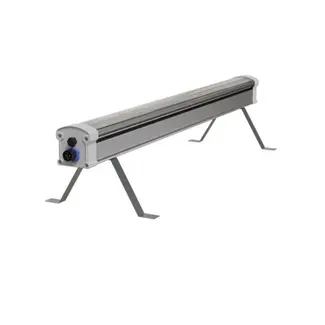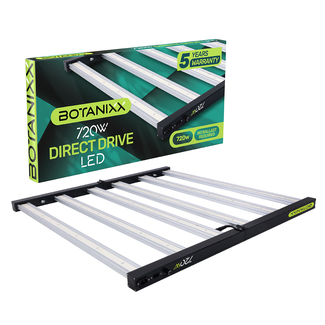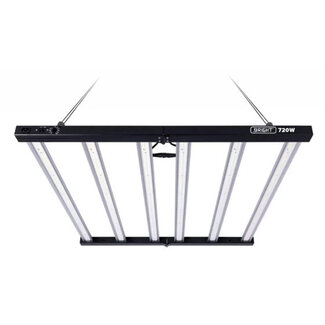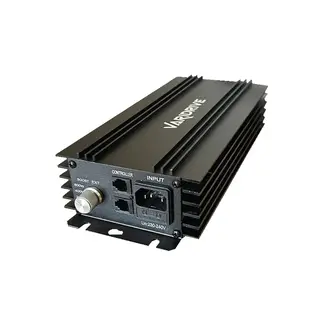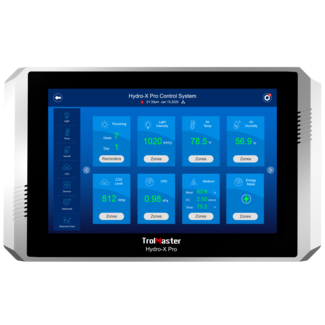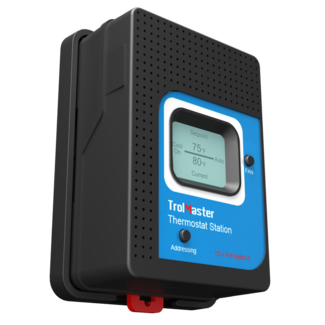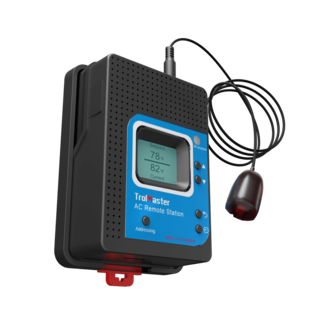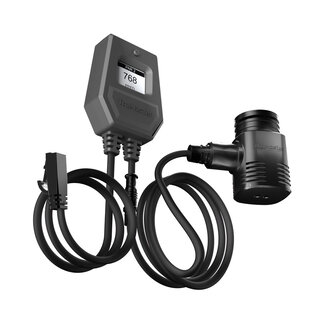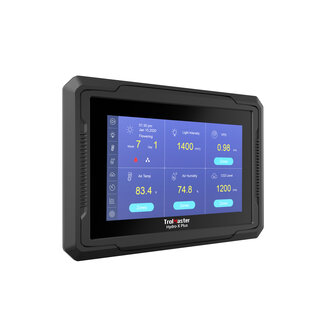Professional Indoor Grow Lights for the Plants
Grow lights are artificial lights that imitate natural sunlight for indoor plants. All these grow light triggers photosynthesis, the biochemical process that makes it possible for plants to sprout, flower, and fruit. Choosing the right grow light comes down to understanding the plants or crops you are growing indoors. Find an array of selected brands who is known the best for manufacturing grow lights.
Here are the different types of grow lights you can find at Slims Place:
- Fluorescent or compact fluorescent lamp (CFL) grow lights;
- Light-emitting diode (LED) grow lights;
- High intensity discharge (HID) grow lights;
- Full-spectrum (closest to natural sunlight) grow lights;
- Broad-spectrum grow lights (mimics the sun but without the UV rays).
When growing most indoor plants, use light bulbs between 4000 and 6000 Kelvin, as the bulb's colour temperature will borrow from a full spectrum of colors—cools and warms. With these lights, you can actually mimic the growth you would get in a greenhouse or outdoors. Offering low energy usage, low heat, and color optimized for growth, LED lights are the most efficient, effective, and customer-friendly way to grow plants at home than growing with fluorescent lights or incandescent lights. An LED grow light array. The most widely used lights for professional use are HIDs and fluorescents. Indoor flower and vegetable growers typically use high-pressure sodium (HPS/SON) and metal halide (MH) HID lights, but fluorescents and LEDs are replacing metal halides due to their efficiency and economy.
Comparisons among grow lights
| Grow Lights: | LED Grow Lights | HID & HPS Grow Lights | Fluorescent (CFL) Grow Lights |
|---|---|---|---|
| Lifespan | 50,000 hours | 20,000 hours | 10,000 hours |
| Watts | 12 to 215 | 35 to 2,000 | 46 to 225 |
| Ranking of Price Per Unit | Highest | High | Medium |
| Energy Consumption | Lowest | Highest | Medium |
| Cost to Operate | Lowest | High | High |
| Efficiency | Very high | Medium | Medium |
| Spectrum | Narrow and broad | Broad | Broad |
Benefits Of Using Grow Lights For Your Indoor Plants
Sunlight is one of the essential factors behind a plant’s growth. It converts soil nutrients, carbon dioxide, and water into food—all of which help plants survive and reproduce. The absence of sunlight can cause your plants to wilt and die, and artificial light could help if you can’t relocate them indoors. Plants need plenty of bright light; they become frail and wilted when light is not sufficient. During the winter season when there’s minimal sunlight, and sometimes even in the sunniest days, plants don’t always get the amount of light that they need. Grow lights are an excellent alternative to natural sunlight if you want your plants to thrive successfully. Here are the benefits of using grow lights for Your Indoor Plants.
1. Faster Harvest Cycle: If you’re growing plants in water or sand, not in the soil, any hydroponics store can provide you with grow lights, which you can use for them as well. There are different kinds of grow lights you can choose from. Two of the most used types of bulbs for grow lights are Light-Emitting Diode (LED) bulbs and traditional High-Intensity Discharge (HID) lamps. LED grow lights are suitable for almost any space and they also produce less heat to avoid damaging your plants.
2. Accurate Light’s Spectrum: The light’s spectrum must optimise the potential of your plant. In certain light wavelengths and wavelength proportions, effects such as growth rate, stretching, and photoperiodism also occur.
3. Environment Friendly: A highly regulated plant environment can be attained by powering your plants with grow lights, which dramatically reduces the need for pesticides and chemical treatments.
4. Less Heat Emission: The UV, IR, direct sunlight, heat and other lighting components can be too extreme for some of your plants. Some plants are burned by the harsh sun, and the browning of a plant’s leaves is a sign of the issue. However, when you use grow lights, you can adjust their heat to the right amount without decreasing the wavelength plants need. Grow lights have a distinct edge compared to other lighting alternatives as they emit far less heat.
5. Optimised Proximity: Due to their low heat power, you can place grow lights nearer to your plants compared to traditional HID bulbs. You can place grow lights even a few inches away from the plant. The size and height of grow lights allow you to help the lights reach a plant’s canopy with maximum light. The fittings can be mounted closer to the plants so that you can follow the manufacturer’s guidelines on the correct distance between the grow lights and plants. If the light needs to be farther away from your plants, you should install grow lights with shorter beam angles.
6. Customised Designs: If you’re looking for a cost-efficient addition to your indoor garden, grow lights are one of your best options. You can choose a range of grow lights at Slims Place that will best suit your indoor space from among many shapes and sizes. The benefit of using grow lights is that they’re more flexible in design and technology than other alternative lighting approaches.





